
To purchase .30-’06 ammunition on GunsAmerica.com, click this link: [track-link url=”https://www.gunsamerica.com/Search.aspx?T=30-06%20ammunition” campaign=”3006Dead” target=”_blank”]https://www.gunsamerica.com/Search.aspx?T=30-06%20ammunition[/track-link]
To purchase a .30-’06 rifle on GunsAmerica.com, click this link: [track-link url=”https://www.gunsamerica.com/Search.aspx?T=30-06%20rifle” campaign=”3006Dead” target=”_blank”]https://www.gunsamerica.com/Search.aspx?T=30-06%20rifle[/track-link]
In this day and age of short magnums, super-short magnums, long cartridges, fat cartridges and everything in between, it seems logical that some of our tried-and-true favorites may have become obsolete. I mean, we’ve had a century to improve upon some of these old designs, so certainly newer must equal better, right? There seems to be a specialized cartridge for just about every conceivable role. Brush-busting heavy projectiles for relatively close-in game? Flat-shooting and accurate rounds for long range? The list of cartridges and specific roles could go on and on. So, is there still a place for the “old” .30-’06?
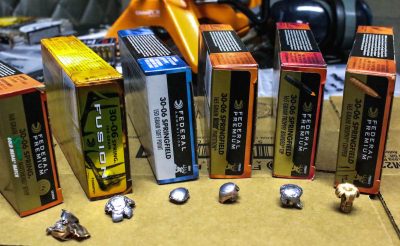
Well, I like to put it this way: There are some wonderful new developments, but there are absolutely no flies on the classics, especially with the modern developments in projectiles and powders. I can’t think of a better example of a classic cartridge—that is wonderfully versatile—than the .30-’06 Springfield.
There is an issue with the .30-’06 Springfield: It’s boring. Wonderfully, predictably, perfectly boring. It is, quite possibly, the best blend of muzzle velocity, manageable recoil, useful bullet choices and flat trajectory around. It’s true that I’ve long been a champion of both the .308 Winchester (for the closer range whitetails and black bears in my native New York) as well as the .300 Winchester Magnum (for long range work and/or situations that may require a bit more horsepower), but I can honestly say that any hunting shot I’ve ever made with either of those cartridges could’ve been handled by my .30-’06. Frankly stated, within sane hunting ranges, a .30-’06 Springfield will handle 95% of your hunting scenarios, save the true big game like hippo, Cape buffalo and elephant, and though there may be better choices for the Alaskan brown bears, the ’06 has taken many of them cleanly.
Why would a military cartridge—bred over a century ago—serve so well in the hunting fields, and why would it stay at the forefront of ammunition and rifle sales 110 years after its inception? In fact, despite its age, the .30-’06 Springfield still represents one of the most popular selling cartridges. According to Federal Premium’s recent sales records, it ranks at No. 3 in ammunition sales, behind only the .223 Remington/5.56mm NATO and .308 Winchester/7.62x51mm NATO rounds.
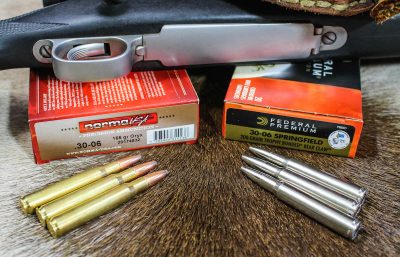
Many component bullet companies use the .30-’06 case as the benchmark for bullet performance testing, and as stated in the [track-link url=”https://www.hornady.com/in-the-news/latest-news/hornady-releases-8th-edition-handbook-of-cartridge-reloading” campaign=”3006DeadHornadyBook” target=”_blank”]”Hornady Handbook of Cartridge Reloading, 8th Edition”[/track-link], “The .30-’06 has the largest variety of suitable powders of the cartridges listed in the Hornady handbook, which illustrates the efficiency of the cartridge.”
Often times, when a new big game rifle is introduced, we gun writers will receive a model chambered in .30-’06 for testing and evaluation, so universal is the performance of the cartridge. It has been offered in virtually every type of rifle action, and I would be willing to wager that this won’t change anytime soon. So, let’s look at the history and design of the cartridge, and perhaps that will give some insight to the usefulness of the ‘ought-six.’
Born of War
The Spanish-American War, especially those battles fought on the island of Cuba, showed the superiority of the 7x57mm Mauser cartridge that the Spanish used over the .30-40 Krag that was the U.S. Army’s choice at the time. Military research began here in the United States, and while the case head of the new cartridge in development showed many attributes of the Mauser design, the Army lengthened the Mauser case to 65mm, or 2.54 inches, and retained the 220-grain round nose bullet of the Krag design, but at 2,300 feet per second (fps) instead of the Krag’s 2,000 fps muzzle velocity. This was designated Cartridge, Ball, Caliber .30, Model of 1903, shortened to .30-’03. It was this cartridge that Theodore Roosevelt took to Africa, in a Winchester Model 1895 lever-action, for his 1909-1910 safari made famous in his classic African Game Trails. While the .30-’03 was a definite advantage over the Krag cartridge, the U.S. Army soon saw the European military powers make the switch from heavy-for-caliber, round nosed bullets to lighter, spitzer bullets, increasing the effective range of the soldier’s rifles. In 1906, the Army made the switch that would hook us hunters for the next century plus; the case was shortened to 63mm (2.494”), and built the load around a 150-grain spitzer bullet, at a muzzle velocity of 2,700 fps.
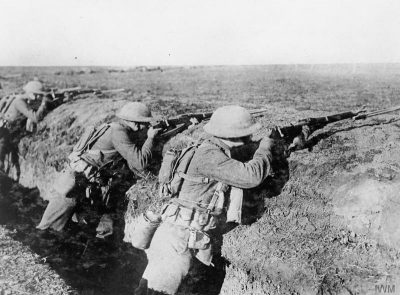
The military success of this cartridge—in a pair of world wars as well as the Korean dustup—is very easy to recognize, but as a hunting round this cartridge (and its flexibility) would set the benchmark for many challengers to come. It can be housed in virtually any style of rifle, from single shot to bolt-action, lever-actions and pumps, as well as a variety of autoloaders. It can make a rifle capable of handling varmints and predators (though not the optimal choice, it will still work), and it will handle the lighter-weight dangerous game like bears, mountain lions and leopards (for which it may be absolutely perfect), but it’s on the game that sits in between those two categories where the .30-’06 most certainly shines.
The ‘aught-six’ makes a fantastic whitetail rifle—it is a staple here in the Northeast, where bears are also on the menu—as well as a great choice for elk and moose-size game. With the sleek, light-for-caliber bullets, it can cleanly take distant antelope on the prairie, yet when loaded with a heavyweight round nose, it will generate enough horsepower to handle animals the size of an eland in the bushveld of South Africa and Zimbabwe or a moose in the swamps of Quebec. It has enough case capacity to make it a flat-shooting cartridge, within sane hunting ranges, so for a shooter who may be uncomfortable the recoil of a .300 Winchester Magnum or 7mm Remington Magnum, it makes a perfectly viable choice of all-around rifle. It is the father of so many wonderful sons, like the .270 Winchester, .280 Remington, .35 Whelen and .25-’06 Remington, yet as the head of the household, the bullet choices for the .30-’06 surpass any other caliber.
A Wide Range of Useful Projectiles
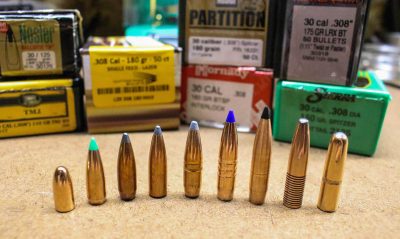
Being .30 caliber is a great thing, as the bullets range between 100 and 250-grains at the extremes, with some fantastic choices in between. The lighter bullets, between 100 and 130 grains, have traditionally been used for the varmints, predators and smaller species. The lower Sectional Density figures ensure that these bullets will upset quickly, to deliver all kinds of hydraulic shock, and as these species are usually smaller to begin with, penetration isn’t an issue. The lighter bullet weights translate into a higher muzzle velocity, and a flatter trajectory.
The bullets in the 140- to 165-grain range are what most deer hunters rely on to make the .30-’06 shine, as they have enough weight to reach the vitals and shoot flat enough to reach out and touch that buck across a hay lot. The 150-grain loadings usually run somewhere around the 2,900 fps mark, while the 165-grain stuff flies about 100 fps slower, but has a bit more weight to ensure penetration. Those 165-grain slugs, when properly constructed, can be used on game up to the size of moose and elk—but we’ll talk more about construction in just a bit.
The 165- to 190-grain bullets are just about perfect for the aforementioned large cervids, as well as handling black bear and African plains game very well. The 180-grain bullets, both the standard cup-and-core designs as well as the premium bullets of all sorts, have made a fantastic choice for the .30-’06 Springfield; it is this weight of bullet that many elk, moose and bear guides, as well as most African Professional Hunters, would recommend as just about the perfect combination for general hunting purposes. Running at a muzzle velocity of right around 2,700 fps, the 180-grain loads will yield just under 3,000 ft.-lbs. of energy at the muzzle, and offer a trajectory that is flat enough for a general hunting rifle.

Bullets weighing 200 grains and more are usually reserved for the biggest game one would hunt with the Springfield, as these longer slugs will deliver the deep penetration needed to break the larger shoulder bones and reach the vitals of the larger species. The classic .30-’06 loading of a 220-grain, round nosed bullet, at a muzzle velocity of 2,300 to 2,400 fps, made a fantastic reputation among the hunters of the early decades of the 20th century, with good cause: the recoil is mild enough to allow the shooter to accurately place his or her shots, and that muzzle velocity has shown—among many cartridges using a long, heavy-for-caliber bullet—to be just about perfect for the cup-and-core bullets of my grandfather’s day. In short, there was little chance of premature bullet breakup, due to low impact velocities and high Sectional Density figures.
The Construction Zone
When the .30-’06 Springfield was developed, the choices of projectile were limited at best. The military full metal jacket was obviously available, and while that style of bullet can be extremely useful to the target crowd, it doesn’t really help the hunter, as it offers no expansion, and makes a poor choice for a quick kill. The expanding bullets were of two types: A soft point, with a small amount of exposed lead core at the nose to allow for expansion to destroy tissue; or as a hollowpoint, for quicker expansion. Both styles however, had the same construction method: A lead core surrounded by a copper jacket. This would be the case until the late 1940s, when Mr. Nosler had a frustrating experience with a bull moose and failing soft-points, and developed the now-famous [track-link url=”https://www.nosler.com/partition-bullet/” campaign=”3006DeadNosler” target=”_blank”]Nosler Partition[/track-link]. That encounter led to an entire industry of “premium” bullets; one which would shake the foundations of what we had come to expect from the hunting cartridges championed by the classic writers.
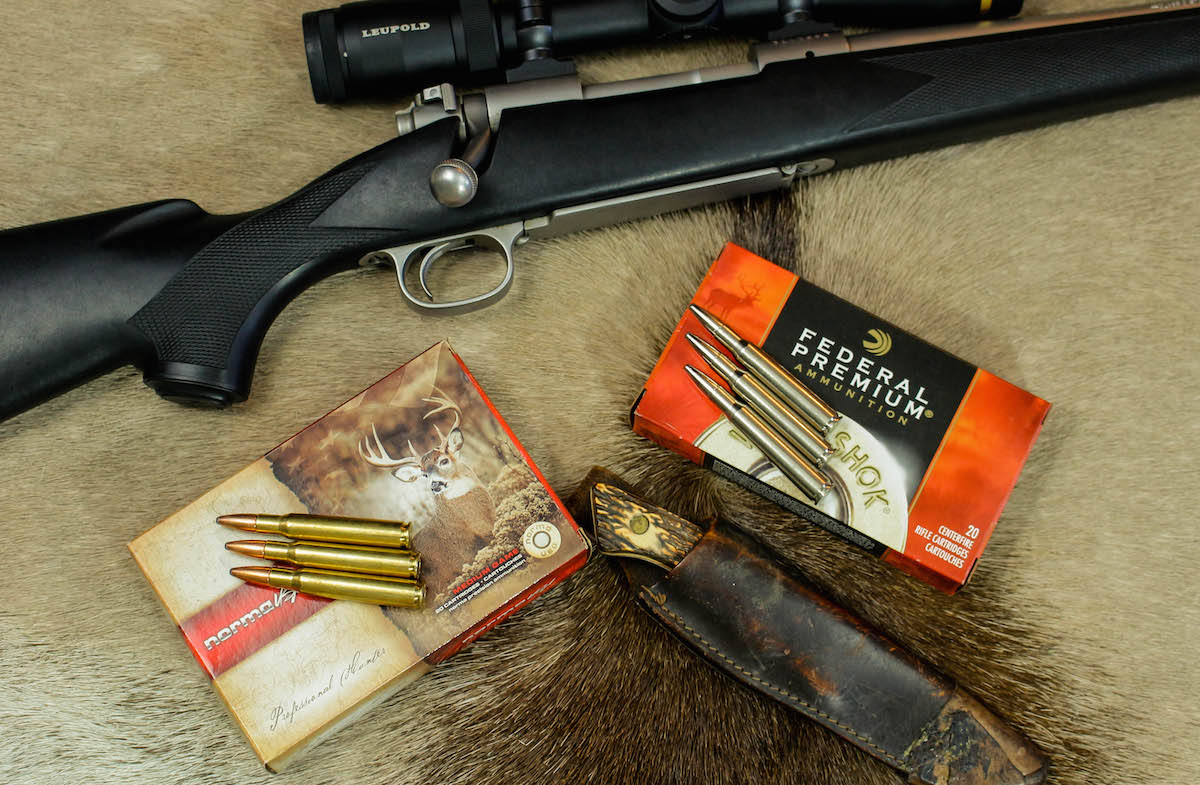
These bullets – performing much more reliably than their predecessors – make a cartridge like the .30-’06 more effective than it had been before. While they don’t change the muzzle velocities or energy figures, the structural integrity of these premium offerings allow a lighter-weight projectile to give the terminal performance of what was expected of much heavier cup-and-core bullets. If the .30-’06 was a solid performer with standard bullets, it became even better when mated with the premiums.
The aforementioned Nosler Partition is a perfect mate for the .30-’06 case; a 180-grain Partition at 2,700 fps or so will handle the lion’s share of animals that the average hunter will have the opportunity to pursue. With a pair of lead cores separated by a wall of copper jacket metal, the Partition will give good expansion up front, while leaving the rear core intact for the deep penetration we all appreciate. Similarly, the fabulous [track-link url=”https://www.swiftbullets.com/” campaign=”3006DeadSwift” target=”_blank”]Swift[/track-link] A-Frame shares the same concept, but with a thicker jacket and the front core bonded to the jacket. I find the Swift A-Frame to be among the finest bullets on the market today. [track-link url=”https://www.federalpremium.com/” campaign=”3006DeadFederal” target=”_blank”]Federal Premium[/track-link] loads the Partition for the ’06, and [track-link url=”https://www.remington.com/ammunition” campaign=”3006DeadRemington” target=”_blank”]Remington’s[/track-link] Safari line includes the 180-grain A-Frame.
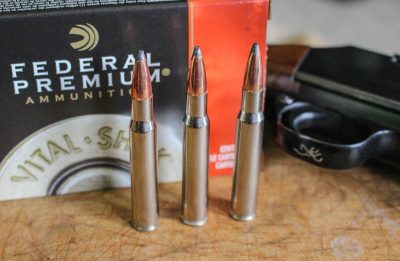
There are also plenty of good spitzer boat tails, with strong bonded cores and polymer tips, which can transform the aught-six into a rather flat shooter, with the strength to deliver the terminal ballistics any hunter would like. The Swift Scirocco II, the Hornady InterBond, and the Nosler AccuBond represent this type of bullet, and even at 150 or 165 grains, will give the deer or sheep hunter confidence in just about any shot angle, as they will usually retain 85 to 90% of their weight, yet their high Ballistic Coefficient helps to fight the effects of a crosswind and maintain the velocity produced.
The monometal bullets work perfectly in the ’06; having no lead core to separate, they will definitely hold together well. You’re all more than likely familiar with the [track-link url=”https://www.barnesbullets.com/” campaign=”3006DeadBarnes” target=”_blank”]Barnes[/track-link] TSX and TTSX bullets, and they work just fine in the century-old case. The Federal Trophy Copper Tipped is another excellent and accurate choice, and has proved to be a great choice for those who choose factory ammunition. I like the 150-grain Cutting Edge Raptor, a hollowpoint bullet designed to have the walls of the ogive break into small blades for severe impact trauma, yet to have the base of the bullet remain at caliber dimension for nice penetration.
There are few “hybrid” designs, which are best described as having a smaller lead core at the front of the bullet, and a very heavy copper base. The Federal Trophy Bonded Bear Claw—a Jack Carter design—is a great example of this idea, as is the North Fork semi-spitzer. These bullets keep their weight forward, for good, straight-line penetration, yet expand enough to cause all sorts of trauma. I like these bullets for thicker-skinned animals, and I usually like them at 180 or 200 grains. Norma’s Oryx bullet is a hybrid design, being a traditional soft-point, but with the rear portion of the jacket bonded to core, to slow expansion. I’ve had nothing but good results with this bullet in the hunting fields.
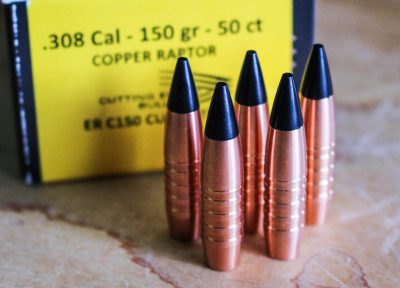
The bullets lying at the extremes are interesting as well. [track-link url=”https://site.cuttingedgebullets.com/” campaign=”3006DeadCuttingEdgeBullets” target=”_blank”]Cutting Edge Bullets[/track-link] offers that same Raptor as a 100-grain bullet; this can be loaded as a hollowpoint, or turned around to be fired as a solid. Rather interesting concept, considering it can be pushed over 3,300 fps from an ’06! The 250-grain Barnes Original is a true heavyweight—I’m thinking black bears over bait—and will certainly be used as a short-range bullet.
There are also some traditional-style bullets that are a bit different. My good pal Kevin Hicks uses his 03-A3 sporter, loaded with 165-grain Sierra GameKing hollowpoints; this bullet features a thick jacket for integrity, but the open nose gives great expansion. Mr. Hicks has used this combination for quite a few whitetails, with good effect.
Roll Your Own
Handloading the .30-’06 is a rather simple procedure. It is a case that will run on nothing short of a multitude of powders; it also has enough case capacity to handle the longer, monometal bullets that are difficult to fit in the .308 Winchester. Over the decades, I’ve used powders from IMR3031—a faster burning rifle powder—to H4831SC and Reloder 22—both on the slower side of the chart—and many in between. My best results have come with IMR4350 and Reloder 19 for the 180-grain slugs, and I’ve used IMR4064, Reloder 15 and VARGET with some of the lighter bullets, giving very accurate groups.
Choose a good large rifle primer—I prefer the Federal GM210M match primer—and keep your brass trimmed to proper length, and it won’t be very long before you find a load that your rifle likes. Be sure, if you choose to use a premium bullet, to find proper data for that specific bullet, as the bearing surfaces and pressure curves can change quickly.
For reloading dies, I prefer the [track-link url=”https://www.redding-reloading.com/” campaign=”3006DeadRedding” target=”_blank”]Redding[/track-link] Match set; it provides not only the tight tolerances for consistent dimensions when resizing cases, but includes a neck sizing die for the bolt-action rifles, and I’ve seen neck-sized cases cut a group size nearly in half. The micrometer-adjustable seating die gives uniform cartridge lengths; something that is very important with the monometal bullets that can show a sensitivity to seating depth. The .30-’06 has a nice, long neck—0.385”—so you’ll get good neck tension to keep your bullet in place, and I don’t feel that crimping your bullets is a necessity. Be sure to full-length resize your cases if you’re loading for anything but the bolt-action rifles, as the autoloaders and pumps lack the camming power to close the bolt.
The Wrap Up
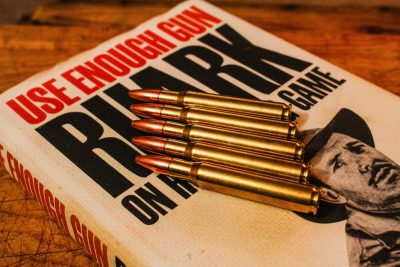
The .30-’06 Springfield is a cartridge that will be right at home in just about any hunt camp, whether in the shadowed hemlock forests of the Adirondacks, the mopane thickets of Zimbabwe or the shale slides of the Alaskan peaks. If truly big game is on the menu, you can easily pair it with a .375 H&H, .404 Jeffrey or one of the .416s, for a very versatile combination. There are other choices in the ’06 power range, like the 7mm Remington Magnum and .300 Winchester Magnum that offer a bit more velocity. But, if you have an accurate rifle in .30-’06 that fits you well, I’d be willing to bet you’ll be reaching for that rifle more often than not. So, I think it is safe to say the reports of the .30-’06’s demise have been greatly exaggerated. Don’t you agree?
To purchase .30-’06 ammunition on GunsAmerica.com, click this link: [track-link url=”https://www.gunsamerica.com/Search.aspx?T=30-06%20ammunition” campaign=”3006Dead” target=”_blank”]https://www.gunsamerica.com/Search.aspx?T=30-06%20ammunition[/track-link]
To purchase a .30-’06 rifle on GunsAmerica.com, click this link: [track-link url=”https://www.gunsamerica.com/Search.aspx?T=30-06%20rifle” campaign=”3006Dead” target=”_blank”]https://www.gunsamerica.com/Search.aspx?T=30-06%20rifle[/track-link]
[one_third]
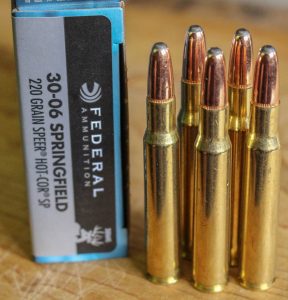
[/one_third]
[two_third_last]
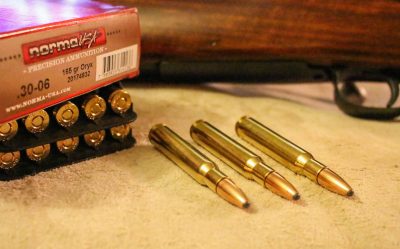
[/two_third_last]
